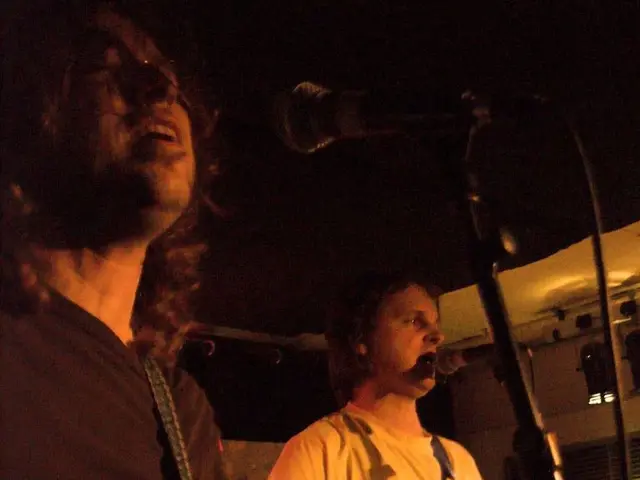Discovering the Diverse Realms of Global Music
The Diverse Landscape of World Music
World music is a genre that encompasses a myriad of musical styles and traditions from across the globe. Originating in the 1980s, the term world music was coined to describe non-Western traditional music but has since expanded to include contemporary and popular music from numerous cultures. This genre serves as a platform for artists to share their distinct sounds with an international audience, celebrating the rich musical heritage of communities worldwide.
Characteristics of World Music
World music is characterized by the use of traditional instruments, unique vocal styles, and rhythmic patterns specific to each culture. By transcending language barriers, it brings people together through the universal language of music. From the soothing melodies of Indian classical music to the captivating rhythms of African drumming, world music offers a glimpse into the cultural traditions and artistic expressions of diverse societies.
The global popularity of world music has soared in recent years, with festivals and events dedicated to the musical genre taking place around the world. Many established artists have incorporated elements of world music into their work, further expanding its reach and influence. World music continues to evolve, blending traditional sounds with modern production techniques and creating innovative fusion genres.
Regional Variations
The musical landscape of world music is as diverse as the cultures it represents. In India, the intricate sitar melodies are a hallmark of the country's classical music, while in Spain, the soul-stirring flamenco guitar captures the essence of the culture. In Africa, traditional music is deeply rooted in the rhythms of life, with drumming and percussion playing a vital role in many communities. Meanwhile, in the Middle East, music often showcases intricate melodic patterns and ornate vocal ornamentation, reflecting the region's rich history and cultural influences. South America's vibrant sounds of samba and bossa nova encapsulate the energy and joy that is synonymous with Brazilian culture.
Influences and Fusions in World Music
One of the most captivating aspects of world music is its ability to evolve through cross-cultural influences and fusions. This has led to a rich tapestry of musical fusions that combine elements from various cultures to create something entirely new. For example, artists such as Anoushka Shankar combine traditional Indian classical music with contemporary Western styles, while groups like Afro Celt Sound System bring together African and Celtic musical traditions to create a dynamic and electrifying sound. These fusions demonstrate the interconnectivity of musical traditions, reinforcing the idea that music transcends borders.
World Music in the Digital Age
The advent of digital technology has revolutionized the way that world music is created, shared, and experienced. With the rise of streaming platforms and social media, artists from around the globe now have unprecedented access to global audiences. This increased exposure has allowed for greater visibility and recognition for traditional and contemporary world music artists, as well as providing opportunities for collaboration and cultural exchange.
In addition, digital technology has made it easier for fans to explore and discover world music from different regions. Virtual concerts and performances, curated playlists on streaming platforms, and other digital initiatives have made world music more accessible than ever before. As a result, world music has become more inclusive and celebrated than ever, providing a platform for artists to share their distinctive sounds with a global audience.
World Music Festivals and Events
World music festivals and events offer opportunities for people to immerse themselves in the rich tapestry of global musical traditions. By promoting cross-cultural collaboration and appreciation, these gatherings help preserve cultural heritage and encourage global unity. WOMAD (World of Music, Arts and Dance) has been bringing together artists from different cultures since 1982, showcasing performances from musicians around the world and featuring workshops, talks, and activities that celebrate cultural diversity. Similarly, events like the Rainforest World Music Festival in Malaysia and the Festival au Désert in Mali provide opportunities for audiences to experience traditional music in its original cultural context.
By exploring world music, we can gain a deeper understanding and appreciation for the richness and complexity of human expression, while celebrating our differences and similarities.
Footnotes and References:
[1] Description adapted from Enrichment Data provided.[2] "The 10 Best World Fusion Bands," Music Connection Magazine, Oct/Nov 2015, https://www.musicconnection.com/news/the-10-best-world-fusion-bands[3] "Jazz-Rock Fusion," Britannica, November 17, 2021, https://www.britannica.com/art/jazz-rock-fusion[4] "The History of Jazz-Rock Fusion," Jazz History Online, January 27, 2022, https://www.jazzhistoryonline.com/history/the-history-of-jazz-rock-fusion/[5] Introduction and summary adapted from Enrichment Data provided.
- As world music continues to evolve, it provides a platform for cultural traditions to collide and create a renewed appreciation for unique sounds, as demonstrated by artists like Anoushka Shankar, who fuse traditional Indian classical music with contemporary Western styles.
- World music festivals, such as WOMAD, Rainforest World Music Festival, and Festival au Désert, allow audiences to immerse themselves in the diverse tapestry of global musical traditions, enabling cross-cultural appreciation and preservation of cultural heritage.







